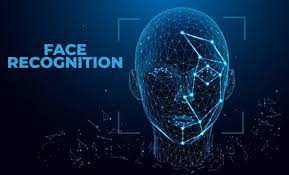Introduction
Facial recognition technology, once confined to the realm of science fiction, is now a pervasive aspect of our daily lives. From unlocking smartphones to security surveillance, the widespread use of facial recognition raises critical ethical considerations. This article explores the ethical implications surrounding facial recognition technology, examining its societal impact, privacy concerns, and the need for responsible deployment.
Understanding Facial Recognition Technology
Facial recognition technology utilizes algorithms to analyze facial features and match them against a database of known faces. While this innovation offers convenience and security, it comes with a host of ethical challenges that demand scrutiny.
Societal Impact
Enhanced Security: Facial recognition aids in law enforcement, border control, and public safety, potentially preventing criminal activities.
Convenience in Authentication: Unlocking devices or accessing secure areas becomes seamless, providing users with an efficient and quick means of verification.
Cons
Privacy Invasion: Widespread use of facial recognition in public spaces can lead to the constant monitoring of individuals without their knowledge or consent.
Potential for Misuse: Governments and entities could exploit facial recognition for surveillance and control, undermining civil liberties.
Privacy Concerns
- Crime Prevention: Facial recognition can assist in identifying and apprehending criminals, enhancing public safety.
- Efficiency in Services: Some argue that the convenience of facial recognition in services like airport check-ins or event access outweighs privacy concerns.
- Surveillance Dystopia: Ubiquitous facial recognition could create a society where individuals feel constantly monitored, eroding the expectation of privacy.
- Data Security Risks: Storing facial data poses risks of data breaches, potentially exposing sensitive information.
Algorithmic Bias and Accuracy
Efficiency and Accuracy: Well-developed facial recognition algorithms can be highly accurate, aiding in rapid identification.Bias and Discrimination: Facial recognition algorithms have shown biases, particularly against women and people with darker skin tones, leading to discriminatory outcomes.
Legislation and Regulation
Legal Frameworks: Implementing regulations can help curb the misuse of facial recognition technology and protect individuals’ rights.Potential for Overreach: Poorly crafted regulations may hinder the beneficial applications of facial recognition without adequately addressing ethical concerns.
Responsible Deployment and Transparency
- Ethical Guidelines: Companies and governments adopting facial recognition can adhere to ethical guidelines, ensuring responsible use.
- Public Awareness: Transparent deployment, combined with public education, fosters awareness about the technology’s capabilities and limitations.
- Lack of Standardization: The absence of standardized ethical guidelines may lead to inconsistent practices in the development and deployment of facial recognition technology.
Conclusion
The ethics of facial recognition technology present a complex landscape with both potential benefits and significant concerns. Striking a balance between leveraging the advantages of this technology for security and efficiency while safeguarding individual privacy and civil liberties is imperative. Ethical considerations should guide the development, deployment, and regulation of facial recognition to ensure a responsible and equitable integration into our increasingly digitized society. As the debate continues, it is crucial for stakeholders to collaborate, fostering a future where facial recognition aligns with ethical principles and respects the fundamental rights of individuals.



